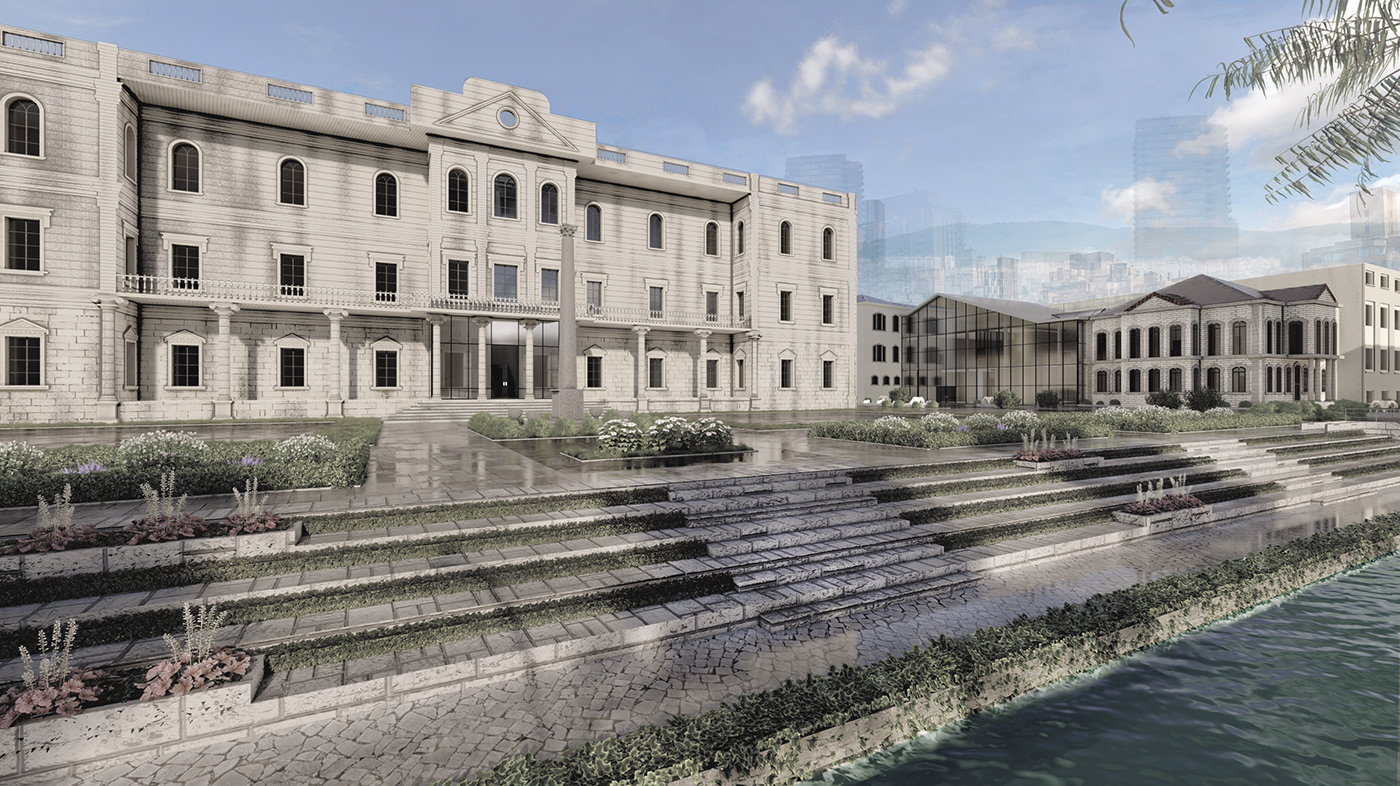

Project Title: Rehabilitation of the ministry of interior affair old complex.
Site Location (City, Country): Syria, Damascus.
Project coordinates on google maps: 33.512769,36.296603
Project Function: Urban Rehabilitation.
The project aims to rehabilitate the Ministry of Interior Affairs Old Complex, which is a significant historical site that dates back to the Ottoman period and is located in the heart of Damascus, Syria. The complex's three buildings are architectural masterpieces that represent the city's rich cultural heritage, each with its unique architectural style and historical significance. However, the site has been neglected for over a decade, resulting in its deterioration and loss of historical value.
To address this issue, the proposed rehabilitation project aims to restore the complex to its former glory and transform it into a cultural complex for the Syrian Museum, and The rehabilitation project will not only restore the buildings but also improve the surrounding public spaces. The project includes the construction of a new public plaza that will connect the complex to the surrounding areas and provide a space for cultural events and activities.
The rehabilitation of this complex will be a positive impact on various levels. At the socio-economic level, the project will create job opportunities and contribute to the local economy. The restoration of these buildings will also attract tourists, increasing revenue for the region. Additionally, the project will provide educational opportunities for students and researchers interested in Syrian history and culture.

The first building, the Ministry of Interior Affairs, was built in the early 20th century and served as the headquarters for the Syrian government's security and law enforcement agencies. The building features a mix of Ottoman and European architectural styles, with intricate designs and decorative elements.
The second building, the old Police department, was constructed in the 20th and served as the central police station for Damascus. The building's design is a blend of Ottoman and Greek architectural styles, featuring grand arches, ornate balconies, and intricate stonework.
The third building, known as the additional service building, was built in the 1930s and served as an administrative office for the Ministry of Interior Affairs. The building's design is local modernist, with clean lines and functional spaces.
The site has been abandoned since 2010, and the function of the other two buildings will be relocated to another site soon.

The project will involve the restoration of the Ministry of Interior Affairs building, which will be converted into a geopolitical museum. This museum will showcase Syria's political history, including its geopolitical relationships with neighboring countries and the rest of the world.
The old Police department building will serve as the Syrian documents museum. This museum will host important historical documents, including legal papers, maps, and photographs, providing visitors with a glimpse into Syria's past.
The third building will be used as an additional service building, providing essential services to visitors and staff.
The restoration work will involve a range of activities, including structural repairs, conservation of decorative elements, and installation of new utilities. The project will also include the construction of new facilities, such as exhibition spaces, research rooms, and administrative offices.
The interstitial space existing between the Police Department edifice and the Immigration and Passports Department has been utilized for the erection of a connecting structure. The said structure accommodates service functions, a restaurant, a café, and a cinema hall, along with an amphitheater that serves to bolster the museum and cultural function.
The complex will serve as a cultural hub for Damascus, attracting visitors from around the world. The geopolitical museum will provide a unique perspective on Syria's political history, with the Syrian documents museum.



The Barada River, which once flowed through the heart of the site, has been covered to create more space for vehicular traffic. This intervention has not only disrupted the natural flow of the river but has also led to the loss of an important ecological feature of the area. Additionally, the surrounding areas have seen an increase in high-rise constructions, which have further intensified the pressure on the site and altered its original character. The excessive urbanization has also led to issues such as traffic congestion, air pollution, and reduced green spaces, which have negatively impacted the quality of life for residents in the area. Overall, these interventions have had a detrimental effect on the site's cultural and historical significance and have compromised its integrity as a heritage site.

The neglect of this site is attributed to urban expansion outside the city center and a disregard for the importance of historical sites. The proposed rehabilitation project aims to benefit socio-economic, tourism, and educational levels. Rehabilitating these buildings will not only preserve their historical value but also contribute to the cultural development of the region.







